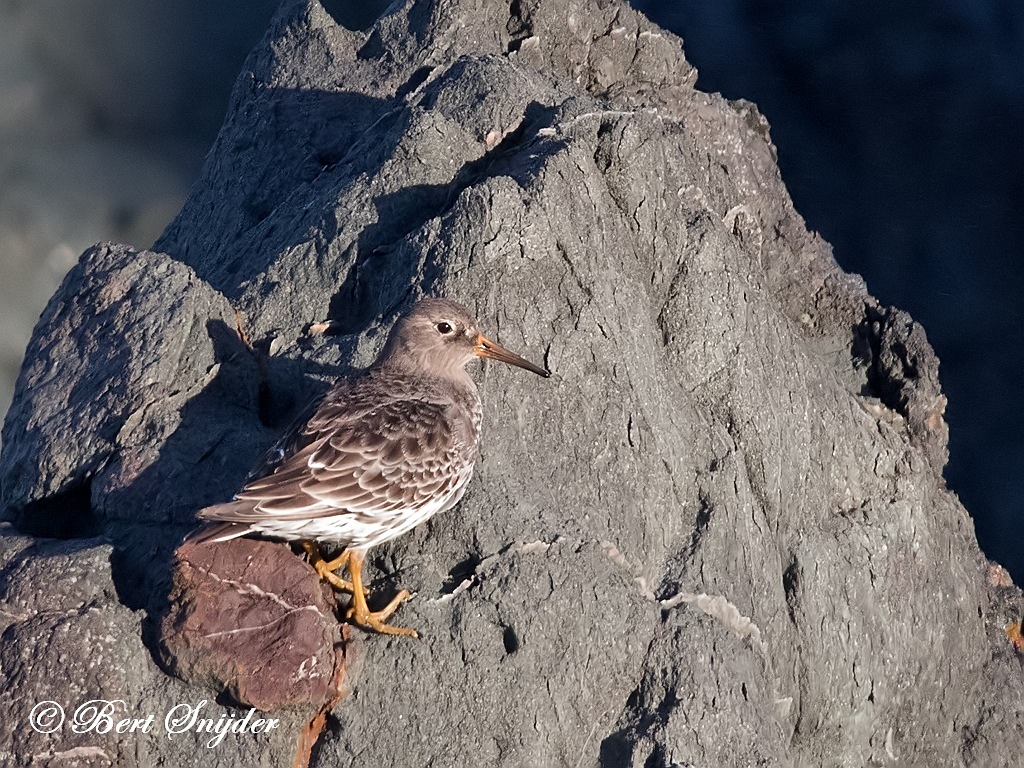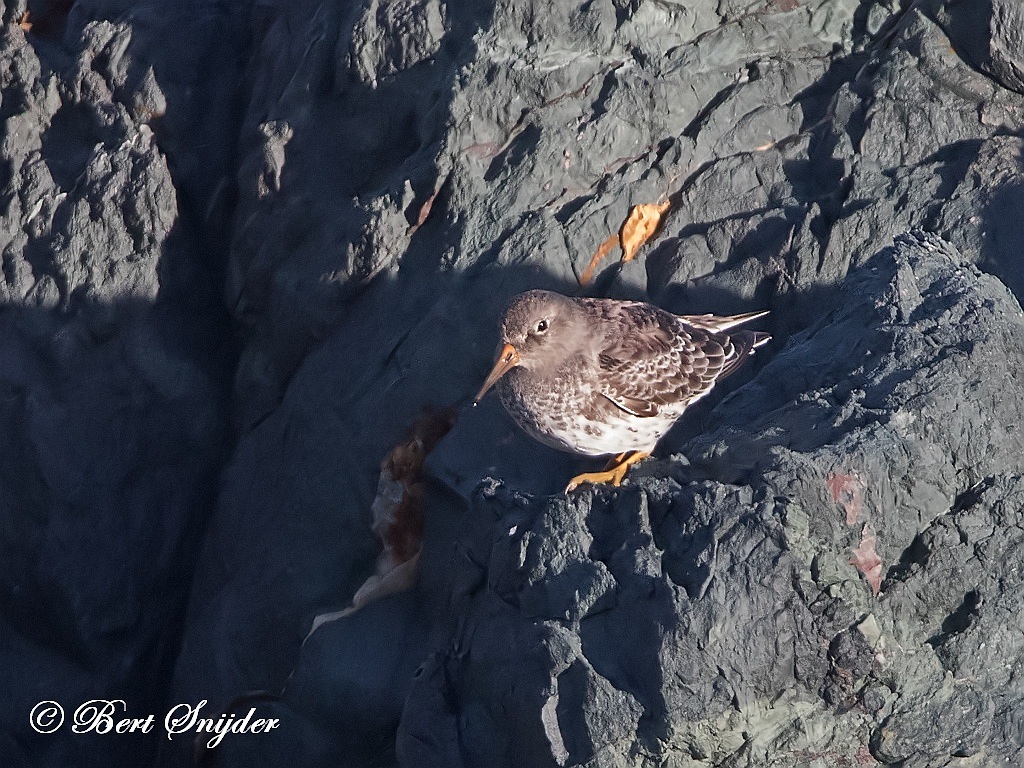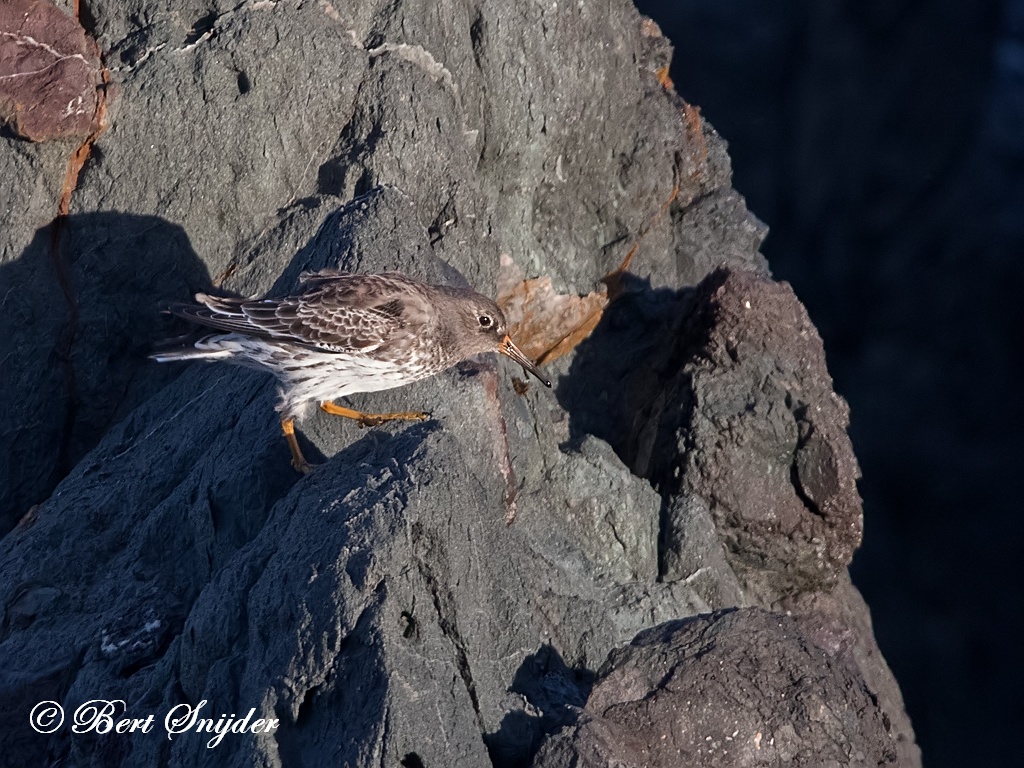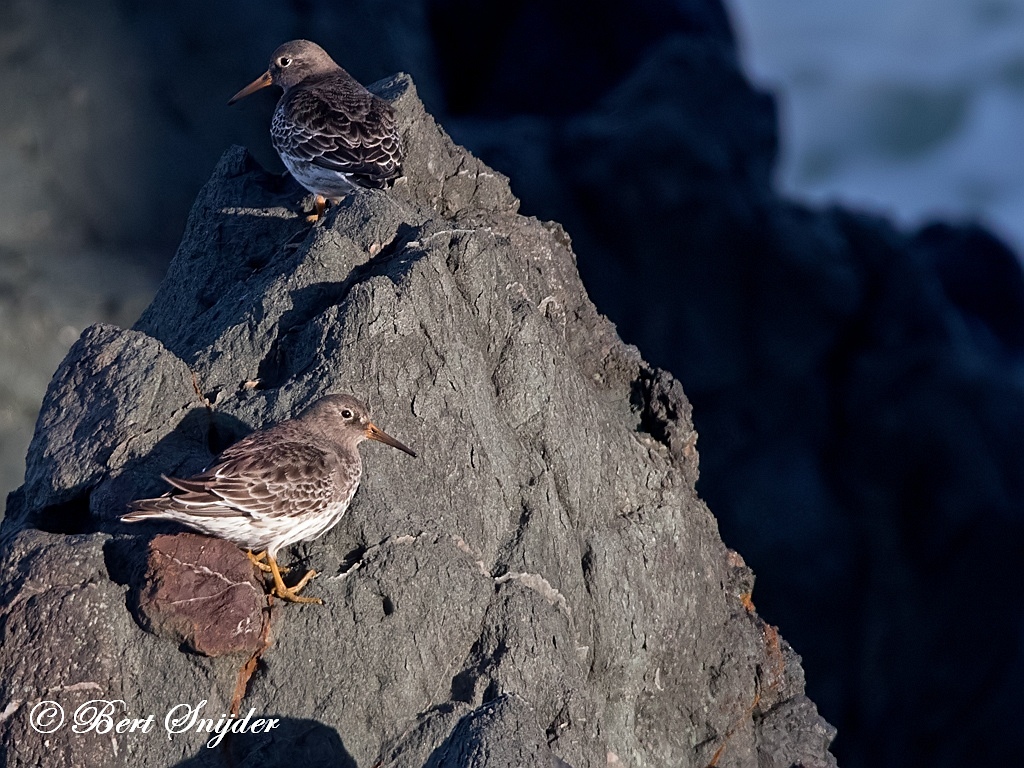Purple Sandpiper, Paarse Strandloper, Meerstrandläufer, Pilrito-escuto, Correlimos Oscuro
Spotted near Sines in the Alentejo region of Portugal. Purple Sandpiper sound
The Purple Sandpiper, Calidris, Arquatella or Erolia maritima is a small shorebird.

More photos at the bottom of this page.
Adults have short yellow legs and a medium thin dark bill with a yellow base. The body is dark on top with a slight purplish gloss and mainly white underneath. The breast is smeared with grey and the rump is black. They measure 20–22 cm (7.9–8.7 in) in length and 42–46 cm (17–18 in) across the wings, and weight is from 50–105 g (1.8–3.7 oz).
Their breeding habitat is the northern tundra on Arctic islands in Canada and coastal areas in Greenland and northwestern Europe. They nest on the ground either elevated on rocks or in lower damp location. The males makes several scrapes; the female choose one and lays 3 or 4 eggs. The male takes the major responsibility for incubation and tends the chicks. The young feed themselves.
In Britain, these birds occur in winter in good numbers principally along the east and south coasts, where they favour rocky shorelines adjacent to the sea. It is much rarer as a breeding bird, found only in a localised area of the Cairngorms National Park, where 1-3 pairs have bred since the 1970s. Records of breeding by this species in the UK are monitored and archived by the Rare Breeding Birds Panel.
They are late migrants and move to rocky ice-free Atlantic coasts in winter. most go no further south than North Carolina and northern Portugal. They are fairly gregarious, forming small flocks, often with Ruddy Turnstones. This species is tame and approachable.
These birds forage on rocky coasts, picking up food by sight. They mainly eat arthropods and mollusks, also some plant material.
The Purple Sandpiper is one of the species to which the Agreement on the Conservation of African-Eurasian Migratory Waterbirds (AEWA) applies.



Other synonyms:
Asturian: Mazaricu de Pedreu, Mazaricu d’Ocle
Breton: Ar sourouc’han du
Catalan: Corriol fosc, Territ fosc, Territ variant
Catalan (Balears): Corriol fosc
Valencian: Territ variant
Czech: jespák moøský, Jespák morský
Welsh: Pibydd du, Pibydd porffor
Danish: Sortgrå ryle
German: Klippenstrandläufer, Meerstrandläufer
English: Purple Sandpiper
Esperanto: markalidro
Spanish: Correlimos Oscuro, Correlimos pechinegro, Playero Dorsirrojo, Playero dorso rojo
Spanish (Costa Rica): Correlimos pechinegro
Spanish (Mexico): Playero Dorsirrojo, Playero dorso rojo
Estonian: Meririsla, Meririsla, merirüdi, merirüdi, merirüdi (meririsla), Merirüdi e. meririsla
Basque: Territ fosc, Txirri ilun, Txirri iluna
Finnish: Merisirri
Faroese: Grælingur, Grágrælingur, Sjógrælingur, Sjógrælíngur
French: Bécasseau maritime, Bécasseau violet
Irish: gobadáinín cosbhuí, Gobadán Cosbhuí
Gaelic: Cam-Ghlas, Luatharan Rioghail
Galician: Pilro escuro, Territ fosc
Manx: Looyran gorrym
Croatian: Morski žalar
Hungarian: Tengeri partfutó
Icelandic: Sendlingur
Italian: Piovanello violetto
Inuktitut: Saarfaarsuk, Segalea, Tudlik
Japanese: murasakihamashigi, Murasakihama-shigi
Cornish: Pyber ruthlas
Latin: Arquatella maritima, Arquatella maritima maritima, Calidris maritima, Charadrius maritima, Ereunetes maritimus, Erolia maritima, Tringa maritima
Maltese: Beggazzina tan-Nord
Dutch: Paarse Strandloper
Norwegian: Fjæremus, Fjærepist, Fjæreplytt
Polish: biegus morski
Portuguese: pilrito escuro, Pilrito-escuro
Romansh: Rivarel violet
Russian: Morskoy Pesochnik
Scots: Luatharan rioghail
Northern Sami: Gáddeviroš
Slovak: Pobrežník morský
Slovenian: morski prodnik, obalni prodnik
Swedish: Skärsnäppa
Travel Birdwatching Holiday Alentejo, Vacation Portugal for birders to see birds on your trip.